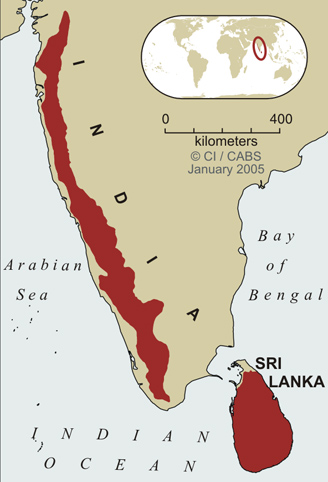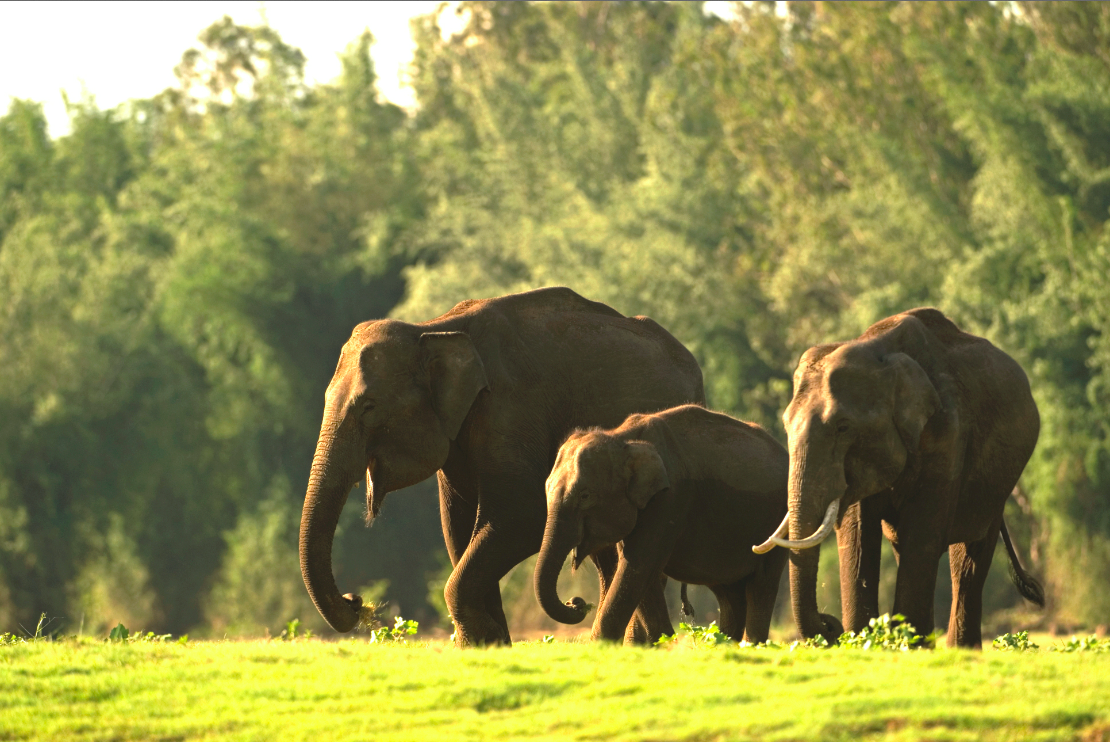By Julia Rothchild
In the mountains of southern India, the grass really is greener on the other side. The Western Ghats, a mountain range that runs for 1,600 kilometers along the western coast, support much more plant and animal life on one side than the other. The ecological contrast is due in part to the heavy rains that sweep over the country for several months every year.

During monsoon season, the side of the Western Ghats mountain range that faces the Arabian Sea is covered in dense deciduous and evergreen forests. The earth blooms with thousands of species of flowering plants. The macaque, Asian elephant, purple frog, and crimson-backed sunbird all find a home among the verdure. The rivers and lakes are full.
The other side of the Western Ghats – the side that faces most of the Indian peninsula – is parched by comparison. Brown savannas cover the earth. The diversity of flora and fauna is more limited.


This natural disparity – more pronounced in some areas than in others – arises because of the way monsoons make their way towards the mainland at the end of every spring. Air near Earth’s surface flows northward from the winter hemisphere toward the Asian land mass that is heated by the summer sun. The Coriolis force turns this air to the right to become the low-level “monsoon westerlies” – eastward winds that constitute the lower branch of the monsoon circulation. These winds are laden with moisture, and travel across the Arabian Sea towards India. About 40 kilometers inland, the air is confronted with the massive chain of mountains, which act as a tall barricade. In order to cross the mountain range, like any good hiker, the monsoon air must trudge up and over. While the air climbs the slopes, much of its moisture falls as rain. When it reaches the other side, the air has been depleted of moisture, which means the climate is more arid east of the peaks.
Due in large part to the huge amount of rainfall on their windward side, the Ghats are one of the world’s eight “hottest hotspots” of biological diversity. Around 5,000 species of vascular plants alone grow there, as do hundreds of species of mammals, reptiles, birds, and amphibians. A large number of these species are endemic to the Ghats: they are found nowhere else in the world. The monsoons therefore nourish an exceptionally vibrant pocket of life. They enable a hotspot of biodiversity, saturated with water, to thrive.


But when the clouds are less generous, both on the drier side of the mountains and during the dry winter months, both wildlife and human life suffer. Drier air means fewer crops and, depending on the area, perhaps less business or more hunger.
Within the past month, it has been reported that farmers in the state of Maharashtra, of which Mumbai is the capitol, are suffering severely from a drought. Sixty percent of villages are currently facing “drought-like conditions,” and the state and Central government are attempting to find relief and aid money. This is the fourth drought in the state since 2008, and agricultural production in the area may be cut in half.
Is there a way to help farmers in areas prone to droughts? To predict anomalies in the Western Ghats, modeling monsoon behavior is critical. Current models are imperfect because of the number and complexity of factors involved. These factors include the starting temperatures of sea air and land air, the contour of the mountains, the size and depth of clouds, and the microscopic interactions between water droplets in the air. The enormous range of variables gives us some idea of the vast challenge climate scientists face when attempting to predict the outcome of the upcoming monsoon season in southern India. As research finds more effective methods to model each of these processes, we hope that predictions of how monsoon air behaves in any given season will improve, and with them the lives of people living in the shadow of the Western Ghats.